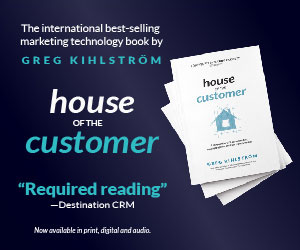This article was based on the interview with Chris Bach of Netlify by Greg Kihlström for The Agile Brand with Greg Kihlström podcast. Listen to the original episode here:
Migration to composable architecture is a topic that has gained significant attention in recent years, especially for e-commerce brands. Traditional monolithic architectures, where the front end and back end are tightly coupled, have limitations when it comes to flexibility, scalability, and agility. As businesses strive to provide personalized and seamless customer experiences, they are turning to composable architecture as a solution.
Composable architecture, also referred to as headless architecture (though there are nuances), involves decoupling the front end and back end of an application. This allows businesses to use best-in-class components for different functionalities, such as content management systems (CMS), search tools, and comments elements. By using specialized components, businesses can deliver a more tailored and optimized experience to their customers.
One of the key advantages of composable architecture is the ability to adapt to changing market demands. With traditional monolithic architectures, making changes or adding new features can be time-consuming and complex. However, with composable architecture, businesses can easily plug in new components or replace existing ones without disrupting the entire system. This flexibility enables businesses to stay agile and respond quickly to customer needs and market trends.
In addition to flexibility, composable architecture also offers faster innovation and development. By using pre-built components, businesses can leverage existing functionalities and focus on building unique and differentiated features. This reduces development time and allows businesses to bring new products or features to market faster.
Another important aspect of composable architecture is enhanced security. With traditional monolithic architectures, a security vulnerability in one part of the system can potentially compromise the entire application. However, with composable architecture, each component operates independently, reducing the risk of a single vulnerability affecting the entire system. This modular approach to security allows businesses to implement stricter security measures and protect sensitive customer data.
While migrating to composable architecture offers numerous benefits, it is important to approach the transition strategically. Businesses should start by identifying areas where the migration will have the most immediate impact and create a project around that. By implementing composable architecture in a phased manner, businesses can see tangible results and use them as a business case for further migration.
It is also important to note that composable architecture is not a one-size-fits-all solution. Businesses need to consider the right components and architecture for their specific needs. This requires collaboration with solution architects who can help navigate the complexities of the migration process.
Overall, migration to composable architecture is a critical step for businesses looking to provide exceptional customer experiences in the e-commerce industry. By decoupling the front end and back end, businesses can leverage best-in-class components, deliver personalized experiences, and adapt to changing market demands. Additionally, composable architecture enables faster innovation and development, as well as enhanced security measures. As more businesses embrace composable architecture, it is becoming a fundamental component of modern e-commerce strategies, allowing retailers to differentiate themselves and provide exceptional customer experiences.











